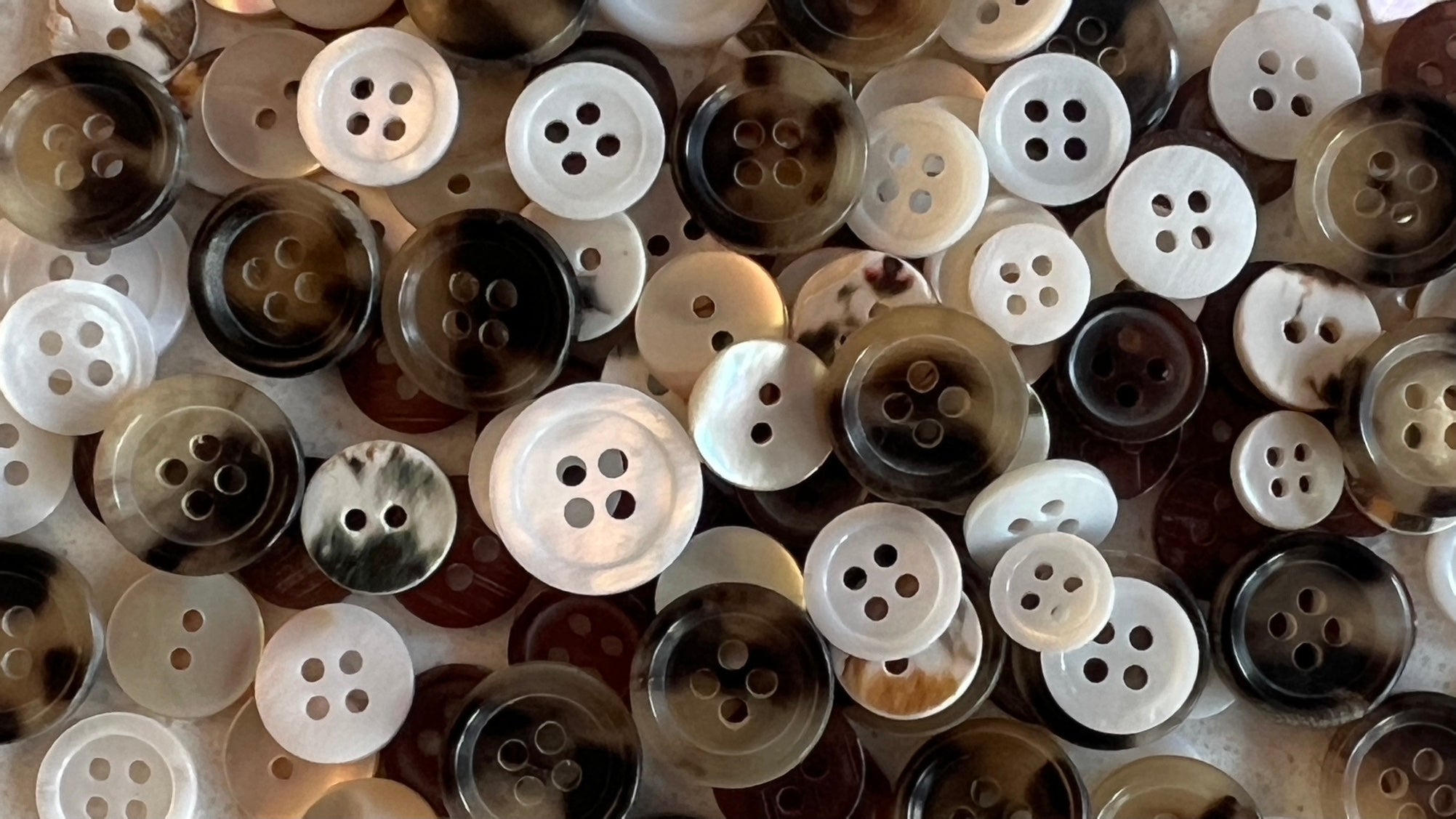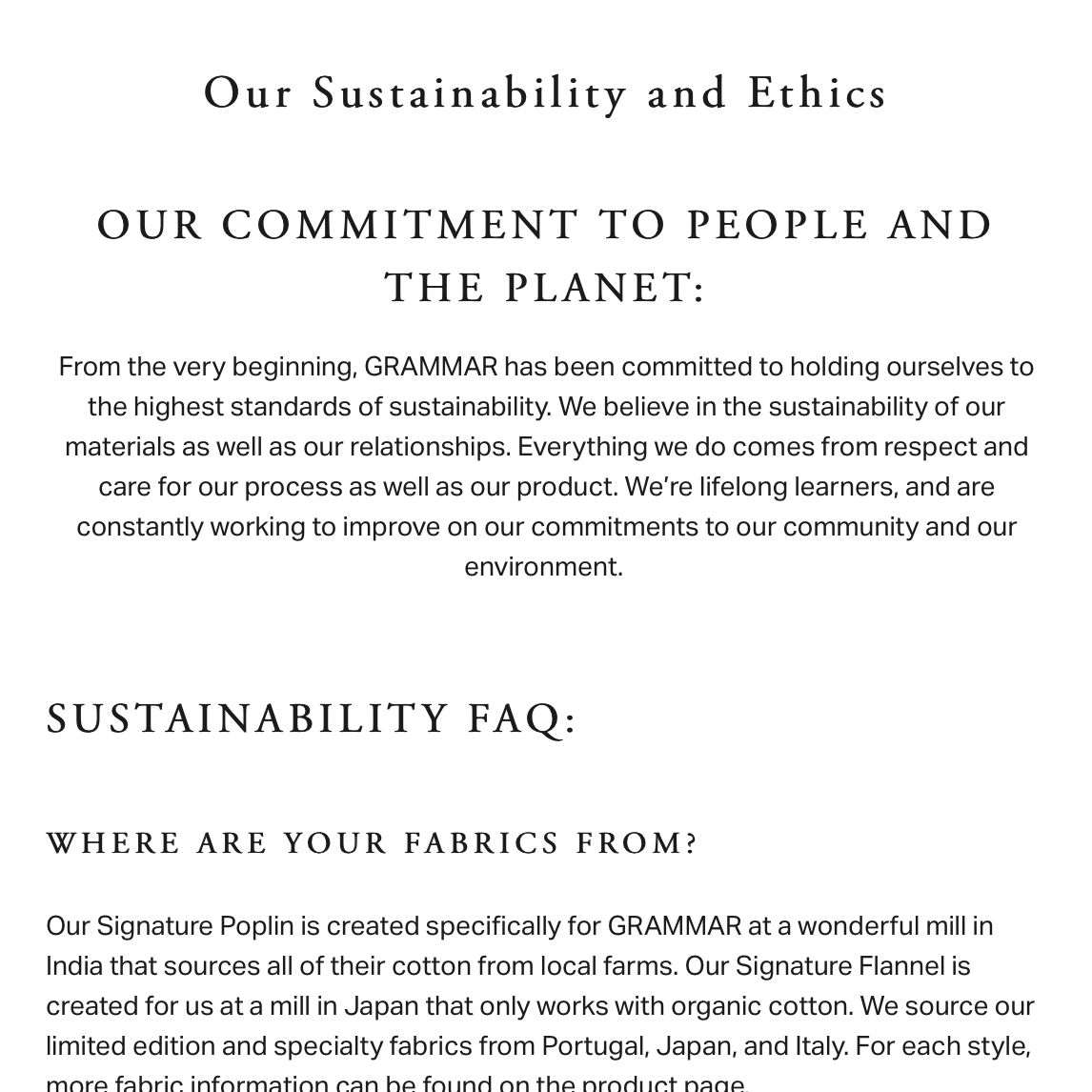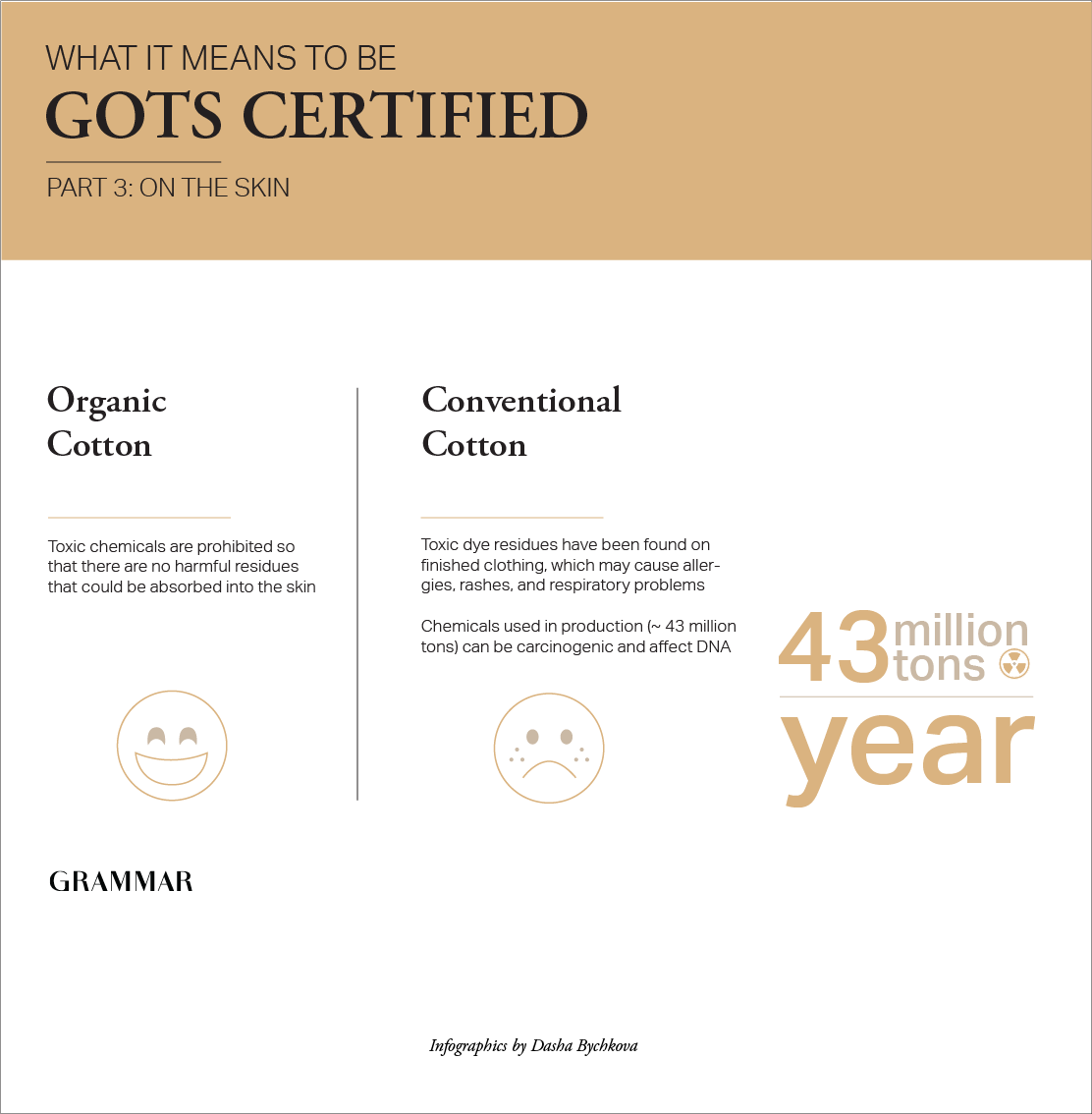A seemingly simple and often overlooked detail to a garment, the button remains an essential piece of fashion technology. In a world of velcro, zippers, and laces, we will always need (and want!) buttons. With a history of over 5000 years, the button’s design, production, and style have been uniquely shaped by its specific cultural and historical contexts.1
Origins
The first recorded button in the archaeological record dates back almost 5000 years in modern day Pakistan. A small metal nub with a single loop, it was said to have been sewn onto clothing as decoration, similar to the function of a brooch or a buckle.2 In fact, all buttons were, at first, made exclusively for decoration: Europe’s Medieval period saw buttons that resembled modern hooks and eyes, made for thread to be looped through, similar to those found in the Middle East.1 It would not be until the colonial era that buttons would meet the first button hole, evolving from a purely aesthetic embellishment to an effective fabric fastener. By the 20th century, buttons made their way into the English vernacular, common idioms such as “cute as a button” or “just short of a button” still in use today.3
Manufacturing
Like all fashion, buttons were first made by hand, sewn onto fabric individually. By the 18th century, buttons could be found in a wide variety of natural materials, such as metal, ceramic, or clay. Metal buttons were commonly found worldwide,1 and were produced by melting the metal, usually a steel or copper alloy, and pouring the liquid into a button mold. These buttons could either be sewn directly onto clothing, or covered in fabric, gems, beads, etc.3
Animal horns, hooves, and bones were gaining popularity as raw materials for buttons.1 These buttons were created by heating and soaking the material, stretching it until flat so that the button shape could be stamped into it using a sharp tool. At first, regardless of material, buttons were commonly made within the household, or on a farm, and the design and quality of the buttons ranged drastically from carefully stained or painted glass buttons to simple, molded steel buttons that received no more than a basic polish.3 It was not until the Industrial Revolution that buttons became mass produced, pressed or stamped by machines in factories, commonly understood and used as fabric fasteners. During this time, buttons evolved into their classic shape known today, consisting of four equally spaced holes and a raised edge, perfectly fit for a corresponding button hold. Further, the convention of engraving the maker or location of production on the backside of the button that developed centuries ago remains in practice today.4
Unlike the wide availability of metal and glass, buttons made of animal by-products depended on what was available in the respective region. Namely, in late 19th-century America, the pearl industry was beginning to flourish, with most pearls and shellfish tracing back to the Mississippi river in Iowa.1Nacre, the iridescent, shiny, smooth material found inside mollusks, is most valuable in the form of a pearl, though it is also found in the lining of shells. Oysters, mussels, abalone snails, Trochus, and turban snails are just some of the marine creatures whose exoskeletons have been used to make buttons for centuries, the most valuable being Mother of Pearl buttons, made from oysters, as harvesting, farming, and sorting the animals requires skill, expertise, and costly labor.4 However, in recent years there have been strict regulations surrounding pearl farming; with oysters now an endangered species4, the fashion industry worldwide has turned to different alternatives.
The Emergence of Plastic
Today, the most popular material used for buttons is plastic. Following the invention of cellulose in the late 19th century, the first man made plastic made of plant fibers, natural materials sourced for making clothing, appliances, and other household tools were beginning to be replaced due to plastic’s low production costs and wide availability, in comparison to the ongoing shortage of natural materials.4 As such, the demand for shell, bone, horn, etc. buttons has since decreased.
The majority of buttons today are made of a synthetic resin.5 A liquid at room temperature with a high viscosity, resin buttons are made by pouring the mixture into a mold until it hardens with a glossy, smooth surface.6 Other plastics used include nylon, polyester, acrylic, and silicone, all of which are hard substances, such that buttons manufactured from these plastics go through a process called injection molding, where the hard plastic is melted first, shaped, and then cooled.6 Though it is said that resin buttons look “cleaner and brighter” in comparison to regular plastic buttons,6 resin is notorious for being one of the least environmentally friendly plastics. When in liquid form, it emits toxic, hazardous fumes that can be carcinogenic to humans, and also requires more fossil fuels than other plastics, which is the largest contributor to carbon dioxide emissions.47
Plastic buttons are manufactured––like most things––in large factories and shipped to various parts of the world. On average, 60% of the world’s buttons each year come from factories in Qiaotou, a small industrial city in China.8 Though a large number of buttons produced in Qiaotou come from natural materials, plastic buttons are still a main export, contributing to the 25 billion plastic buttons made each year, which equals roughly 50,000 tonnes of plastic.8
And yet, plastic is overtaking the fashion industry by way of more than just buttons: pleather, polyester, and acrylic––to name a few––have long replaced their natural counterparts of genuine leather, silk, and wool respectively. These cheaply made, low-quality, synthetic fabrics amount to nearly two-thirds of today’s clothing, contributing to up to 35% of the world’s ocean plastics.9 Because plastic is not biodegradable, it remains in the environment essentially forever, and the only way to “get rid” of plastic without causing more harm to the environment is to reuse or recycle it. Unfortunately, the modern fashion industry teaches overzealous consumption, as well as the assumption that clothes are expendable, replaceable, and inessential, making it one of the leading contributors to our world’s ever increasing landfills, trash islands, and carbon emissions.







